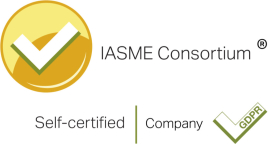Following a greater than expected tax yield from the introduction of the ATED (Annual Tax on Enveloped Dwellings), HMRC have decided to widen the net over the next two years. Originally, the ATED charge for holding UK residential property within a corporate structure was aimed at those individuals sheltering properties worth in excess of £2,000,000 from Stamp Duty Land Tax. However, HMRC have decided to introduce the following new bandings (with annual charges adjacent):-
| Value of Property | Charge |
| £1,000,000 to £2,000,000 | £7,000 |
| £500,000 to £1,000,000 | £3,500 |
The higher banding is operative for the ATED period 1 April 2015 to 31 March 2016, whilst the lower banding will start for the ATED period 1 April 2016 to 31 March 2017.
For both new bandings there will be transitional rules, as HMRC accepts that there may be some delay due to a lack of awareness of the changes. The usual and transitional submission/payment dates for the period 1 April 2015 to 31 March 2016 are shown below:-
Properties in Excess of £2,000,000 (Usual):-
Submission Deadline 30 April 2015
Payment Deadline 30 April 2015
Properties valued between £1,000,000 and £2,000,000 (Transitional):-
Submission Deadline 1 October 2015
Payment Deadline 31 October 2015
Whilst the changes noted above will clearly result in many additional properties being caught, further bad news has come in the form of inflation busting tax increases of around 50%.
For example, a corporate owning a property worth £2,100,000 can now expect to pay a charge of £23,350, an increase of £7,950 on the previous year. The greater the value of the property, the bigger the tax increase. From 1 April 2014, the annual chargeable amounts are being increased in line with the CPI (Consumer Prices Index).
One saving grace is the opportunity to claim relief in certain circumstances. Probably the most common reliefs are where the property is let on a commercial basis or held for development purposes. However, the relief still needs to be claimed through an ATED Return due by 30 April 2015 (or 1 October 2015 for the new banding). Failure to submit a Return and claim relief can result in penalties of at least £1,300 by the time the Return is six months overdue. The penalties are set out below:-
Initial Late Filing Penalty – £100
After 3 Months – £10 Per Day (up to a maximum of £900)
After 6 Months – £300 or 5% of the tax due (higher of)
After 12 Months – £300 or 5% of the tax due (higher of)
Whilst on the subject of relief, where a property is let to a connected party (spouse, child or lineal descendant of the corporate shareholder), no relief can be granted.
Although HMRC do allow taxpayers to Self-Assess the value of their properties for ATED purposes, it should be noted that if HMRC challenge and the value proves to be incorrect, penalties can be levied. The penalty regime is the same as that used for Self-Assessment and other taxes (Schedule 24 FA 2007 & Schedule 55 FA 2009).
For existing ATED payers, a value should have been ascribed as at 1 April 2012. For properties purchased after that date, the value used is the purchase price. HMRC have stipulated that the values need to be reassessed every five years so 1 April 2017 will be the next applicable valuation date. If a property has been purchased during the period between valuation dates, there will still be a requirement to reassess the value at the next main revaluation date. For example, a property bought on 1 April 2015 will need to be revalued on 1 April 2017 and not five years after the date of purchase.
You may also like to refer to Cetin Suleyman’s blog, which touched on many of the issues raised above.
The information in this article was correct at the date it was first published.
However it is of a generic nature and cannot constitute advice. Specific advice should be sought before any action taken.
If you would like to discuss how this applies to you, we would be delighted to talk to you. Please make contact with the author on the details shown below.








